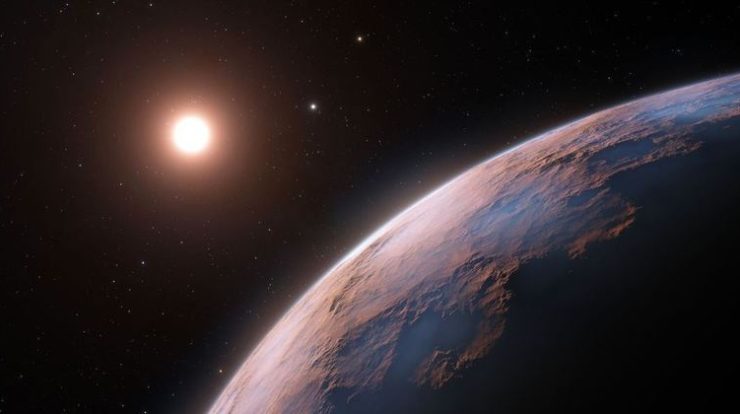
A team of astronomers has found evidence of another planet orbiting Proxima Centauri, the closest star to our solar system. Proxima Centauri is 4 light years away. This candidate planet is the third discovered in this planetary system and the lightest discovered to date orbiting this star. This planet, which is only a quarter of the mass of Earth, is one of the lightest exoplanets ever found.
“This discovery shows that our closest star appears to have a number of interesting planets in its orbit, within the reach of further studies and future exploration,” explains João Faria, a researcher at the Institute of Astrophysics and Space Sciences, in Portugal, and the leader of the study published today in the journal Science. Astronomy and Astrophysics.
The discovery was possible only with the help of the VLT (Very Large Telescope), from ESO (European Southern Observatory), located in Chile and precisely dedicated to the search for exoplanets, as they are called exoplanets.
The newly discovered planet was named Proxima d. It orbits the star Proxima Centauri at a distance of about 4 million km, less than a tenth of the distance between Mercury and the Sun. The planet orbits between the star and the habitable zone – the region around the star. Where liquid water can exist on the surface of a planet – and it takes only five days to complete one orbit around Proxima Centauri.
In addition to Proxima d, two other planets were already known to orbit Proxima Centauri: one of them is Proxima b, a planet with a mass similar to Earth that orbits the star every 11 days and is located in its habitable zone, and the candidate planet Proxima. C, which performs a longer five-year spin around the star. All of them have rocky features.
Proxima b was discovered a few years ago with the help of the HARPS instrument mounted on ESO’s 3.6-meter telescope. This result was confirmed in 2020 when scientists observed the Proxima system with a new, high-resolution instrument installed on ESO’s VLT, ESPRESSO (Echelle Spectrograph for Rocky Exoplanets and Stable Spectroscopic Observations).
It was during these recent observations of the VLT that astronomers discovered the first hints of a signal meeting a new object with a five-day orbit. Because the signal was so weak, the team had to make follow-up observations with ESPRESSO to make sure it was due to a planet, and not just the result of changes in the star itself.
“After obtaining new observations, we were then able to confirm that this signal corresponds to a new candidate for a planet,” Faria says. “I was very excited about the challenge of detecting such a weak signal and discovering an exoplanet so close to Earth.”
At only a quarter of Earth’s mass, Proxima d is the lightest exoplanet ever measured using the radial velocity technique, surpassing a recently discovered planet in the L 98-59 planetary system. This technology works by capturing minute vibrations in a star’s motion caused by the gravitational force of an orbiting planet. The gravitational effect of Proxima D is so small that it only causes Proxima Centauri to move back and forth at a speed of 40 cm per second (1.44 km/h).
“This result is very important. This shows that the radial velocity technique has the potential to reveal a range of light planets, like our own, which should be the most abundant in our galaxy and that could host life as we know it,” says Pedro Figueira, Scientist at ESPRESSO Instrument from ESO, Chile, as well as a researcher at the Institute of Astrophysics and Space Sciences, in Portugal.
ESPRESSO’s search for other planets will be complemented by ESO’s ELT (Extremely Large Telescope), currently under construction in the Atacama Desert, which will be crucial to the discovery and study of many planets around nearby stars.
This discovery was documented in a short-term candidate article orbiting sub-Earth Proxima Centauri, published in the Journal of Astronomy and Astrophysics.

“Web geek. Wannabe thinker. Reader. Freelance travel evangelist. Pop culture aficionado. Certified music scholar.”






